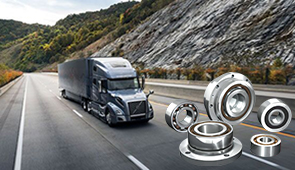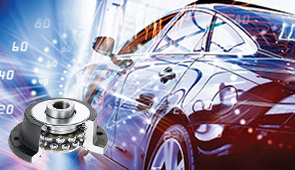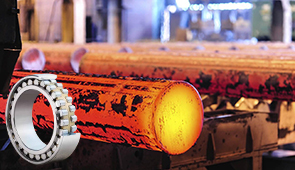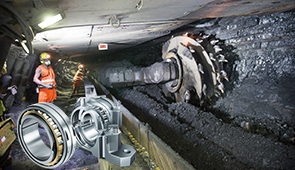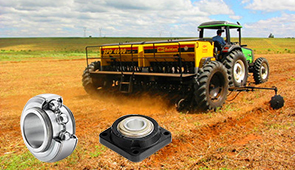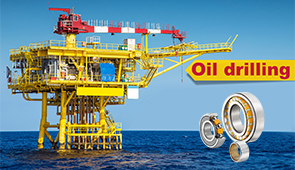Understanding the Function and Application of Bearings and Seals in Wheel and Axle Systems
Wheel and axle systems are critical components in countless mechanical applications, from vehicles and industrial machinery to heavy-duty equipment. At the heart of these systems lie bearings and seals—essential elements that ensure smooth operation, enhance efficiency, and prevent damage caused by friction and contamination. Proper understanding of how bearings and seals function, as well as their role in maintaining the integrity and longevity of wheel and axle systems, is vital for engineers, mechanics, and equipment operators alike. This article will explore the intricacies of bearings and seals, providing a detailed look at their design, functionality, and practical applications. Whether you’re looking to optimize performance or troubleshoot issues, this guide will equip you with the knowledge to make informed decisions and ensure operational reliability.
What is a seal in the context of bearings?
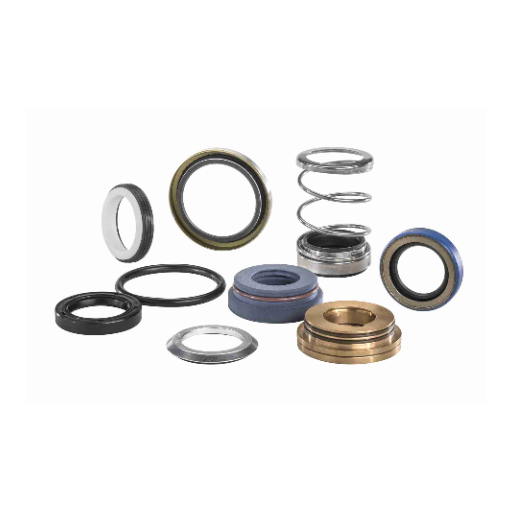
Types of seals used in bearings and seals
The main purpose of seals in bearings is to maintain the necessary lubricant within the system while also preventing the entry of damaging contaminants such as dust, dirt, and moisture. Based on a bearing’s operational demands, contact seals and non-contact seals are the two main types of seals used in bearings.
- Contact Seals: These seals are designed to rub against a bearing or a housing and thus make contact with it. Contact seals, which are commonly made of rubber or elastomer, form a complete seal so that no contaminant enters and no lubricant escapes. On the contrary, having increased protection makes contact seals more prone to friction, which will diminish operational efficiency in high-speed scenarios. A common form includes single-lip and double-lip seals.
- Non-Contact Seals: Unlike the former, these seals do not obstruct the moving parts of the bearing but rather block entry through non-physical means such as air gaps and labyrinths. Solving the friction conundrum faced in high-speed applications is unimpeded by non-contact seals. An example of these non-contact seals is labyrinth seals, which are well-known non-contact seals for use in heavy-duty industrial applications.
Contact seals are more effective in rugged environments with a high chance of contamination, while non-contact seals are ideal for applications with high-speed and high-efficiency requirements. The right seal selection guarantees optimum bearing operation over a prolonged period, reduces the need for maintenance, and decreases the chances of premature failure.
How do rubber seals and grease seals work?
Both of these seals act as guards to contain lubricants while blocking dirt, dust, moisture, and other contaminants from penetrating sensitive parts. These seals enable mechanical systems to perform optimally by maintaining the seal’s lubricated area, which increases the machinery’s service life.
Rubber seals, for example, are primarily composed of materials like silicone and nitrile rubber, and because of their great deal of flexibility, they expand and contract as needed to produce seals along dynamic and static joints. They perform competently across a wide range of pressures and temperatures and make accommodations to minor surface irregularities. Rubber seals strengthen the performance of hydraulic and pneumatic systems and are also useful in performing sealing functions in rotary and reciprocating pumps, valves, and other industrial equipment.
Grease seals, commonly known as oil seals, prevent lubricants from leaking out of the rotating or stationary parts of a system. These seals incorporate a flexible lip and a metal or plastic shell that forms a protective cover. The shaft interrupting the surface ensures that lubrication is maintained while avoiding the influx of unwanted materials into the system. In automotive axles, gearboxes, and industrial machinery, grease seals are vital as they enhance efficacy and mitigate wear from friction or foreign material intrusion.
The role of seals in preventing contaminants
Seals perform important functions in the protection of mechanical systems by preventing the entry of contaminants, thus contributing to the overall efficiency and lifetime of a system. Apart from moisture and dirt, extraneous components add friction, which in turn affects system performance. Abrasive wear and tear, which eventually leads to system failure, becomes probable. Seals’ primary purpose is to isolate these elements whilst preserving lubrication, which smoothens operation.
Machinery depends on seals to clean the airspace so parts are less likely to spontaneously fail. Seals enable automotive systems such as axles and engine seals to protect sensitive components like gears and bearings from particulate and moisture corrosion. Industrial equipment also depends on seals to securely contain airspace cleaner, while also ensuring smooth system function in the presence of dust and chemicals.
Good seals are specific to the application. Each seal’s one-of-a-kind environment incorporates material selection for temperature, chemical exposure, and mechanical strain. Ensuring system integrity and keeping up high-performance, high-quality seals offer a lot of value by containing exceptional and steady seals that guarantee precise placement without leakage.
How do different types of bearings function?
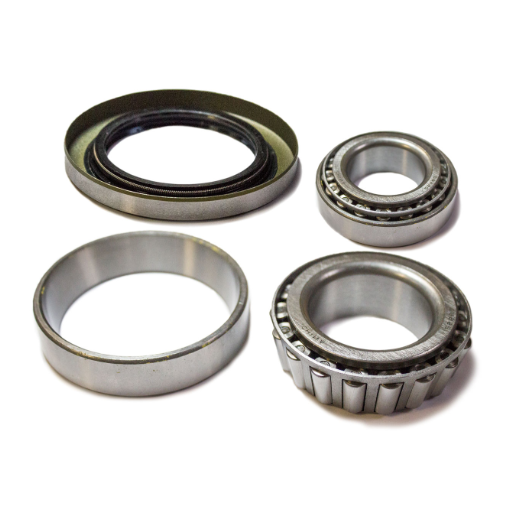
Understanding ball bearings and roller bearings
Ball and roller bearings help in the smooth operation of machines by minimizing the friction between moving parts. Ball bearings consist of rotatable spherical balls that enable the rotation of supporting structures (both axial and radial), while ensuring minimal friction. Their diverse applications include electric motors, fan systems, and conveyor systems due to their need for unparalleled speed and precision.
Roller bearings use cylindrical or tapered rollers in place of balls, which increases the contact area of the bearing race. Enhanced contact area enables roller bearings to bear heavier loads radially and moderately in an axial fashion. This makes them highly useful in agricultural machinery, conveyor belts, and even heavy industrial equipment. Amongst all the bearing types, cylindrical, tapered, and spherical roller bearings have their own characteristics that distinguish them based on alignment and load.
Using ceramic along with other materials with better hygiene and lubrication enables modern technology to better bearings so they can withstand hot conditions and function for longer periods without wearing out. Better seals to increase lifespan by preventing pollution have also been introduced in modern bearings. With the proper knowledge of roller and ball bearings, engineers can make decisions that will improve the dependability and efficiency of the systems.
The advantages of tapered roller bearings
Tapered roller bearings are vital for the majority of industrial applications because they can withstand combined radial and axial loads. Their specific configurations allow for great flexibility and adaptability to different conditions of use.
- Tolerance To Heavy Load
The thrust and radial loads that tapered roller bearings can withstand are significant. It is because of the large contact area of rolling elements that is between the bearing and the raceways which enables force distribution, hence leading to the improvement of overcoming the loads. Industry estimates also indicate that Tapered roller bearings can accommodate up to 60 percent of their radial load rating as axial load.
- Tapered Roller Bearing Combination Of Axial And Radial Load
With tapered roller bearings, they can manage dual load scenarios, unlike many other forms of bearings where radial and axial forces act simultaneously. Examples include the automotive wheel hubs and gearboxes.
- Increased Working Lifetime And Durability
Better performance is achieved with minimal stress concentration points due to the tapered configuration under heavy and fluctuating loads. Demand conditions will, however, be reduced with more advanced steel grades and heat-treated bearings, which enable them to have greater life cycles.
- Stable With Precise Alignment
They also have enhanced structural rigidity, stabilizing vibration, and improving machining precision. This feature is beneficial for mechanics and aerospace machinery that operate with extreme precision.
- Customizable Configurations for Versatile Applications
The various types of tapered roller bearings, such as single row, double row, and four row constructions, make them versatile. This flexibility enables engineers to choose the most appropriate type that meets specific system needs, which improves system efficiency.
This flexibility makes tapered roller bearings the preferred option for heavy-duty applications or high-precision work because of their reliability and dependability.
Application of bearings in industrial machinery
Bearings are an indispensable part of almost any modern industry because they facilitate an efficient and reliable operation of systems by limiting friction, enabling efficient support for rotational and linear movement. Moreover, they maintain the precise alignment of different parts of machinery that move in tandem. Bearings are highly crucial in a variety of industrial processes.
- Electric Motors
Bearings help deep groove ball and cylindrical roller bearings perform at high speeds and radial loads with minimal vibrations and heat generation, effortlessly supporting the rotational movement of motor shafts.
- Gearboxes
Needle bearings, tapered roller bearings, and spherical roller bearings that can manage combined axial and radial loads under adverse conditions are applied to the equipment that aids in supporting shafts and gears in the gearbox.
- Pumps and Compressors
The effective movement or compression of fluid relies on the stable rotation of critical components like the implanter. The rotary motion is enabled by angular contact ball and thrust bearings since they can sustain varying axial and radial loads.
- Conveyor Systems
In conveyor systems, the bearing assemblies enable smooth movement of conveyor belts or rollers by reducing friction and facilitating their movement. Idler bearings are commonly deep groove ball bearings due to their long service life, low maintenance, and ability to withstand constant use.
- Machinery Tools
Dynamic conditions require precision bearings in machine tools for accurate static and high-speed rotating, and extending the tools’ service life. Spindle bearings separate CNC and other industrial machines into two due to the high-grade angular contact ball bearings mounted on them for rigid, high precision.
For all of these applications, it is apparent that having industrial machinery with bearing carefully designed and chosebearings n optimally makes their performance and operational efficiency transcend the needs of the industry.
Why is grease important for bearings and seals?
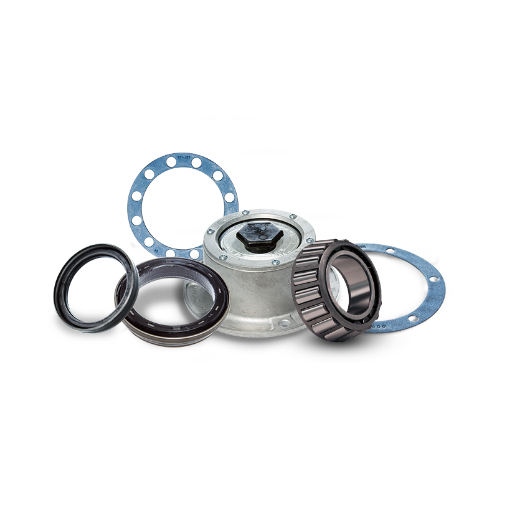
The role of grease in reducing friction
Lubricants such as grease serve critical purposes, including but not limited to reducing friction on a lubricant film type basis, wear, and damage, while also improving the overall lifetime of the machinery. Moreover, grease helps protect movable parts and components from cooling water corrosion. Below are five ways in which grease helps inhibit any possible friction:
- Friction Reduction
Through inhibition of contact between surfaces, grease helps in the creation of a barrier, leading to a reduction of movement resistance and overall friction.
- Heat Transfer
Aside from the reduction of friction, grease helps cool off heat produced during the operation of a mechanical device; hence, maintaining reasonable functioning temperatures without overheating.
- Force Distribution
With the application of grease comes even displacement of pressure on contact areas. This greatly reduces the overall stress on machines to perform efficiently.
- Pollutant Barrier
Though some might claim grease serves to encourage the entering of budgetary emissions, it greatly helps in the blockage of dust and dirt while further serving in decreasing friction and breakdown.
- Rising Deterioration Shield
With grease applied on the bearing and seal inner parts, moisture penetration gets delayed, which further facilitates the prevention of friction and endorses concentration corrosion avoided sequential taints.
These features focus on the efficiency grease renders to maintain friction levels, allowing complex industrial networks to operate seamlessly.
Choosing the right lubricant for bearings
In making decisions about lubricating a bearing, I first assess several critical issues that will impact both the bearing and the equipment’s lifespan. To begin with, I assess the operating temperature, load, and speed. In high-temperature applications, I select high-temperature lubricants. On the other hand, oil or grease with low viscosity is used in high-speed bearings to reduce friction and heat generation, and also in high-temperature applications. Depending on the operational load, I may also shift to a lubricant with higher extreme-pressure (EP) additive concentrations in order to limit abrasion under severe conditions.
One of the other important areas that I assess is the bearing’s environmental exposure. For this reason, if the bearings are situated in a dusty, Wet, or corrosive environment, then high water-resistant grease containing rust inhibitors becomes inevitable. In addition, such lubricants are critical in guarding the bearings against corrosion while enhancing the bearings’ operational longevity.
Lastly, I look at the type of lubricant as well as the design of the bearing when planning the re-lubrication tasks. For sealed or shielded bearings, for instance, I may decide on a maintenance-free long-life grease, while open bearings may need a lubricant that can be reapplied periodically. With these considerations, I am able to determine the most appropriate lubricant because it balances operational needs with system reliability.
Common issues with grease and how to solve them
One of the most serious problems with grease in bearing operations is contamination. Dirt, dust, and moisture particles can penetrate the grease, causing it to lose its lubricating ability, resulting in increased wear or corrosion. To avoid this, high-quality seals must be employed along with proper handling during the re-lubrication procedure to reduce contact with contaminants.
Another issue is high operating temperatures that lead to grease degradation. High operating temperatures may lead to the decomposition of the base oil or thickener, which may lower the overall performance of the grease. Using a lubricant with an appropriate temperature range while monitoring operating conditions helps prevent thermal degradation. In high-temperature situations, heat-resistant synthetic greases tend to be widely recommended.
Over lubrication and under lubrication are equally important issues to handle. Damaging the bearing due to excess churn and heat buildup from over lubricating a bearing, and insufficient film strength for effective operation from under lubricating to leads to bearing damage. Following exactly the imetables of re-lubrication set by the manufacturer, and using automated lubrication systems helps maintain optimal levels of grease for balance.
Lastly, grease incompatibility may not seem like it, but it is quite an important issue. Adding different types of grease may lead to undesired chemical interactions, thus negatively changing the system’s performance. Either use compatible greases or completely remove the lubricant before replacing it with another. Following system rubrics on grease compatibility is very crucial when it comes to sustaining system reliability.
How to select the right bearings and seals for your application?
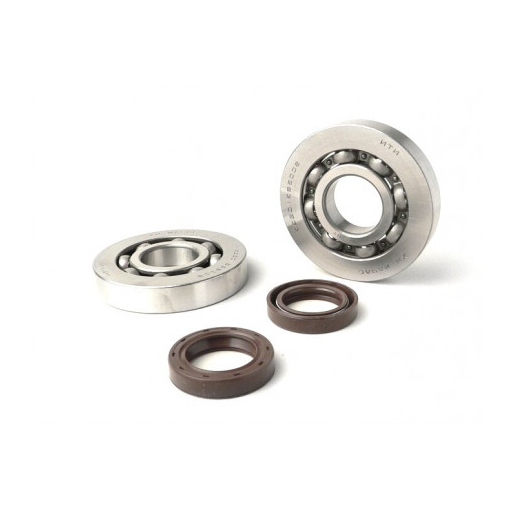
Factors to consider in bearing selection
The analysis of various operational and environmental aspects is crucial for choosing the bearing type that will offer the best performance, reliability, and lifespan among other attributes in the system. The primary factors to look at include:
- Load Type and Magnitude: Identify whether the bearing will be exposed to radial, axial, or both loads. Estimate the skeletal frame load intensity since it impacts both the size of the bearing and the type needed, along with the operational stresses placed on them.
- Rotational Speed: The temperature and lubrication needs of the bearing will depend on the speed at which it operates. For applications requiring higher speeds, specialized bearings designed to minimize friction and heat should be used. This includes ball bearings and hybrid ceramic ones.
- Operating Environment: Look at other external factors like the temperature range, the possibility of contamination, or the presence of harmful chemicals and non-corrosive substances, along with the risk of corrosion. Heavily contaminated environments call for sealed or shielded bearings, while extreme corrosive conditions require special materials.
- Lifespan and Load Ratings: Establish the performance life span of the system alongside dynamic and static load ratings. These values show the enduring and non-rejecting force conditions the bearing can withstand without premature failure within set conditions of desired life span and safety margins.
- Lubrication Requirements: Proper maintenance reduces friction and wear, and this requires proper lubrication. Ensure the bearing is compatible with the selected grease or oil, based on the application as well as the operating temperatures (bearing and oil).
- Alignment and Misalignment: Avoid premature failure and short lifespan due to shaft misalignment by using self-aligning bearings. They are ideal for applications where misalignment can occur.
- Housing and Mounting Constraints: Check the mounting space and the type of housing necessitated by the system. Taking into consideration the design and dimensions, the bearing should be placed within the predefined constraints of thermal expansion and mechanical stresses.
- Noise and Vibration Levels: Certain applications, like medical and aerospace, require low-noise and low-vibration bearings. Situations such as these call for precision bearings, which are highly balanced.
The systematic analysis of the above factors enhances decision-making when selecting a bearing, reducing maintenance activities, downtime, and improving overall performance.
The importance of working with a reliable supplier
Working with a trusted supplier who is an expert in bearings and related components is crucial for operational success and effectiveness. Able suppliers offer a diverse range of products, such as high-grade parts in compliance with applicable legal regulations and offer competent technical consultation, after-sales services, and maintenance. This is particularly important in parts where precision and durability in performance are critical.
A reliable supplier will provide accurate technical documentation, such as material, load rating, and operating limits, which aids in alleviating concerns about uninformed selection or poor sifting during the selection process. Often, these specialist suppliers will also put in place stringent quality control procedures, which increase the chances that a supplier will offer reliable products that are free from defects and consistently perform as expected. Many leading suppliers also permit access to advanced engineering, such as hybrid ceramic bearings and specialized protective coatings that serve to improve operational efficiency and duration of use.
These specialized suppliers also have reliable inventory control systems that aid in quick order fulfillment and timely delivery, avoiding production delays. Some of these even provide users with predictive analytics functions, maintenance, and uptime optimization services, which can foresee failures and aid in timely issue mitigation. These enhanced services aid in reducing operational expenses, improving reliability processes, and improving system performance.
Selecting a dependable supplier enables businesses to meet regulatory requirements, minimizes downtime, and allows organizations to foster mutually beneficial, non-transactional relationships that drive innovation, operational excellence, and continuous refinement.
What are the maintenance tips for bearings and seals?
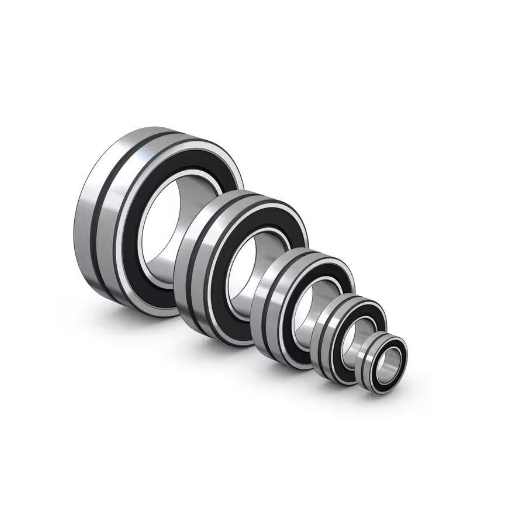
Regular maintenance practices to extend life
To maintain mechanical systems’ reliability and longevity, it is imperative to properly maintain the seals and bearings. Here are some examples:
- Lubricant Management: The specified lubricant type and quantity, as set forth by the manufacturer, must be followed. Both over-lubrication and under-lubrication lead to overheating and contact wear, respectively. The use of modern synthetic lubricants usually eliminates these concerns and offers higher performance along with longer periods between relubrication intervals.
- Contamination Management: Prevent the infiltration of moisture or particulates and keep the operating area clean. To achieve this, high-quality seals, along with regular inspections of the sealing mechanisms for wear or damage that could allow contaminants to breach protective features, should be used.
- Temperature Control: Keep the lubricant and bearing or seal material at working temperature limits. Consistent operating temperatures should be maintained and monitored for abnormalities that are likely indications of more serious underlying problems with the system. Keeping these sensors around the system instantly provides the operator with information regarding excessive fluctuations.
- Response Monitoring: Off-center shaft alignment translates to uneven load distribution, which leads to undue stress on the seals and bearings, potentially leading to premature wear. Sensors such as laser alignment devices can effectively aid in performance checks to ensure the precision equipment is optimally positioned along the shaft.
- Load Control: Give special attention to the amount of force applied to the system, so as not to go beyond any given design criteria. Resources put into maintaining or regulating excessive force result in component damage and loss of structural integrity.
- Scheduled Examination: Carry out both visual and technical examinations of the seal and bearing periodically. Early detection of wear and tear, misalignment, or potential failure can be accomplished with ultrasonic and vibration analysis, enabling maintenance before issues arise.
- Maintenance Tasks for Component Substitution: Change out components within their designated timeline per the recommended instructions, even if the equipment shows no faults or issues. Adopting a proactive stance on replacement minimises the chances of sudden breakdowns and premature loss of productivity.
Employing such thorough maintenance strategies enables businesses to minimize bearing and seal failures and outages while optimizing overall performance.
Signs of bearing and seal failure
It is extremely important to identify the initial signs of seal failure early on to preserve system performance and prevent expensive equipment failure. One of the first signs detected is higher operating temperatures. These temperatures are removed from normal operating levels due to too much friction from lack of lubrication, contamination, or misalignment, Increased vibration levels are a key indicator. Also, threshold levels of condition monitoring for vibration point to abnormal vibration patterns because of bearing wear, imbalance, or surface fatigue due to the bearing changing shape.
Voiced warning symptoms such as grinding, squealing, or whining may imply deterioration bearing surface or seal failure. It is widely accepted that leakage of lubricant from the vicinity of a seal is an unmistakable indicator of as this breaks the ability of the bearing to perform its function. Corrosion, discoloration, and even pitting on the surface of the bearing are the best indicators of degradation, which should be given the best attention. Increased shaft movement or alignment tends to be very common, which signifies that the seal and bearing do not retain their designed tolerances.
Predictive maintenance approaches of vibration analysis, thermography, and oil sampling for monitoring these parameters allow the operators to constantly track the metrics. These alerts, along with automated issue detection, enable a better focus value to bring to issue prevention before problems become much larger than control. Data derived from monitoring systems can provide better management focus by ensuring and enhancing the uninterrupted operation of the systems.
Repair or replace: Making the right decision
There are multiple imperative elements that have to be taken into account about the efficiency of operations and costs, when contemplating the decision of replacing or repairing a machinery part. To begin with, there is a need to evaluate the repair costs in contrast to the long-term costs of replacement. A good example would be the components that are approaching their lifecycle. Such components can maintain repair, however, this can pose a challenge when it comes to unmaintained breakdowns or repairs. They would amplify the costs as well as the inconveniences in maintenance.
Certainly, when it comes to replacing a part, analyzing how the component can be upgraded technologically helps with enhancing its efficiency. Last but not least, examining if the placed component can provide prolonged reliability aids with determining if its intended use aids with prolonged downtime.
Moreover, performing exploratory or historical failure analysis together with the operational and environmental stressors alongside the most recent predictive maintenance recommendations should also be considered. These approaches are complemented by machine learning algorithms and real-time monitoring systems that assess the likelihood of a successful restoration through repair versus a more strategic long-term replacement. Employing sophisticated modern diagnostics together with detailed system checks allows operators to make more accurate, impactful decisions that improve the trustworthiness and longevity of their systems.
Frequently Asked Questions (FAQ)
Q: What is the primary function of wheel bearings in automotive systems?
A: Wheel bearings are crucial for enabling the wheels to rotate with minimal friction. They support the weight of the vehicle, ensure smooth wheel rotation, and help maintain alignment, contributing to the overall low friction and efficiency of the automotive system.
Q: How do seals contribute to the operation of wheel and axle systems?
A: Seals are primarily used to block contaminants such as dirt, water, and debris from entering the bearing assembly. This protection ensures that the moving components remain clean and lubricated, which is essential for the system to run smoothly and extend the life of the bearings.
Q: What are the common types of bearings used in the manufacturing industry?
A: In the manufacturing sector, common types of bearings include ball bearings, roller bearings, and pillow block bearings. These are selected based on their capability to handle specific loads and their suitability for various machinery and equipment.
Q: Why is it important to have bearings and seals in stock for machinery maintenance?
A: Having bearings and seals in stock is vital for the timely maintenance and repair of machinery. This ensures minimal downtime and consistent operation, which is crucial for maintaining productivity in industries such as automotive, agricultural, and manufacturing.
Q: What is the difference between metric and inch size bearings?
A: Metric and inch size bearings differ in their dimensional standards. Metric bearings are measured in millimeters and are widely used in international manufacturing, while inch-size bearings, measured in inches, are often found in older or region-specific machinery. Both types are available to meet diverse specification requirements.
Q: How are trailer bearings different from standard wheel bearings?
A: Trailer bearings are specifically designed to handle the unique loads and conditions of trailers. They are often included in a kit with all necessary components to ensure proper installation and operation, offering durability and reliability under heavy loads.
Q: What materials are commonly used in the manufacture of bearings and seals?
A: Bearings and seals are often manufactured using materials like stainless steel for their corrosion resistance and durability. Advanced polymers and elastomers are also used for seals to provide flexibility and effective sealing under varying temperatures and pressures.
Q: How do you ensure that your bearings and seals meet industry specifications?
A: Ensuring that bearings and seals meet industry specifications involves rigorous testing and quality control during manufacture. This includes verifying dimensions, material properties, and performance under simulated operational conditions to guarantee their reliability and effectiveness.
Q: What role does a supply chain play in the availability of bearings and seals?
A: A robust supply chain ensures a steady and reliable flow of bearings and seals, keeping them in stock for various industries. This is crucial for maintaining operational efficiency, reducing lead times, and supporting the maintenance and repair needs of machinery and equipment.
UCTH213-40J-300 with Setscrew(inch)
CNSORDERNO: Normal-duty(2)
TOGN: UCTH213-40J-300
SDI: B-R1/8
SD: 2 1/2
UCTH212-39J-300 with Setscrew(inch)
CNSORDERNO: Normal-duty(2)
TOGN: UCTH212-39J-300
SDI: B-R1/8
SD: 2 7/16
UCTH212-38J-300 with Setscrew(inch)
CNSORDERNO: Normal-duty(2)
TOGN: UCTH212-38J-300
SDI: B-R1/8
SD: 2 3/8
UCTH212-36J-300 with Setscrew(inch)
CNSORDERNO: Normal-duty(2)
TOGN: UCTH212-36J-300
SDI: B-R1/8
SD: 2 1/4
UCTH211-35J-300 with Setscrew(inch)
CNSORDERNO: Normal-duty(2)
TOGN: UCTH211-35J-300
SDI: B-R1/8
SD: 2 3/16
UCTH211-34J-300 with Setscrew(inch)
CNSORDERNO: Normal-duty(2)
TOGN: UCTH211-34J-300
SDI: B-R1/8
SD: 2 1/8










